Do You Deadhead Lobelia? Tips for Reviving Your Blooms
Lobelia is a beautiful addition to any garden, with its vibrant blooms and delicate appearance. Many gardeners wonder if they need to deadhead lobelia to keep these flowers looking their best.
Yes, deadheading lobelia is necessary to encourage more blooms and maintain a tidy look.

When you deadhead lobelia, you’re removing the faded or spent flowers. This practice helps the plant focus its energy on producing new blooms instead of seeds. Your lobelia plants will not only look tidier, but you’ll also get extended flowering throughout the season.
Some types of lobelia don’t require constant deadheading because they self-clean. But a bit of attention can go a long way in keeping your garden neat and colorful.
Whether you have spiky types or compact varieties, giving your lobelia a little care can make them flourish beautifully.
Understanding Lobelia
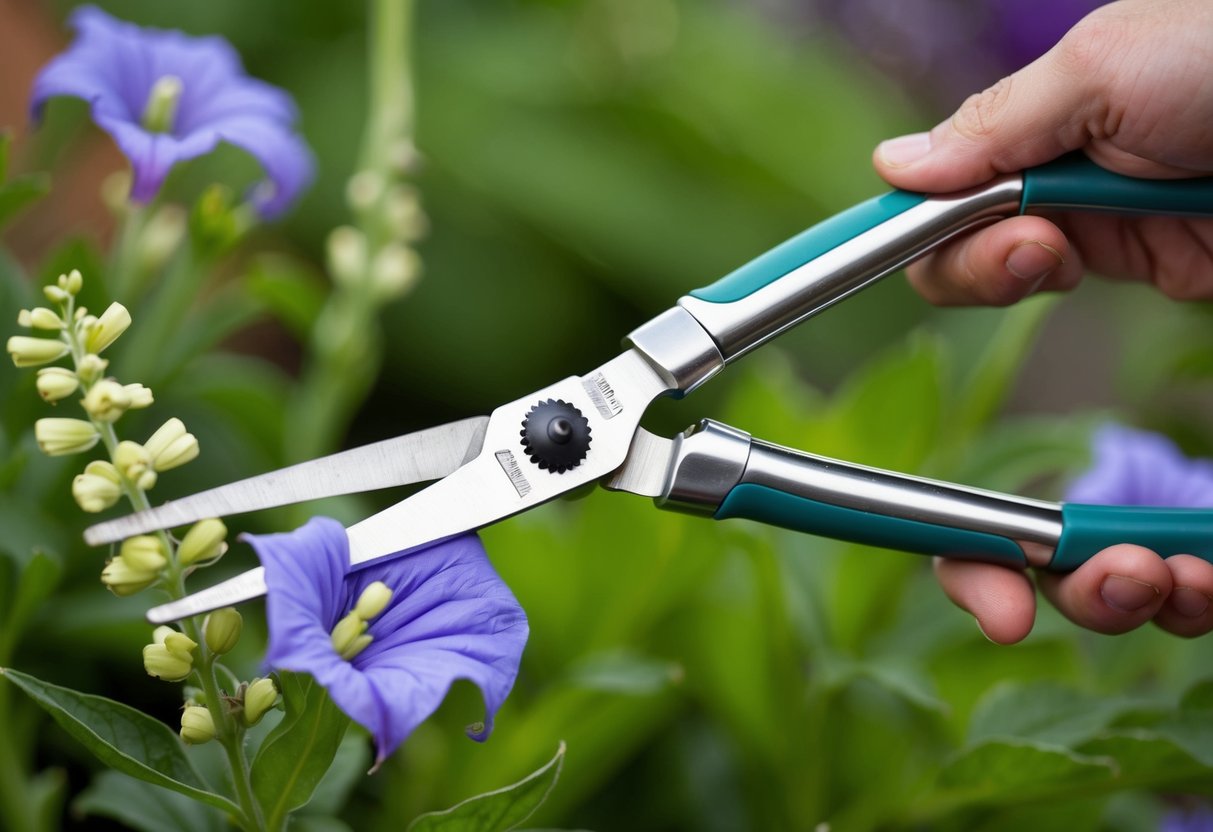
Lobelia is a beautiful group of flowering plants that add color to gardens. They are available in different forms, including both annual lobelia and perennial lobelia. An annual plant like lobelia erinus often serves as a garden favorite due to its vibrant and cascading blooms.
In contrast, the cardinal flower or lobelia cardinalis and lobelia siphilitica are known as perennials. These types of lobelia thrive in moist environments and can come back year after year. They can be a good choice if you want blooms season after season.
Here’s a quick table to differentiate the common types of lobelia:
| Type | Lifespan | Environment | Common Names |
|---|---|---|---|
| Lobelia erinus | Annual | Garden beds | Annual Lobelia |
| Lobelia cardinalis | Perennial | Wet areas | Cardinal Flower |
| Lobelia siphilitica | Perennial | Moist gardens | Blue Lobelia |
Annual lobelia typically grows best in sunny spots. Perennials like lobelia cardinalis prefer wetter areas, making them perfect for ponds or rain gardens.
Whether you’re growing lobelia for its cascading flowers or its striking red blooms, there’s a variety to match your garden’s needs. Consider what you want from your garden—annual bursts of color or enduring blooms—and choose your lobelia accordingly.
Benefits of Deadheading Lobelia
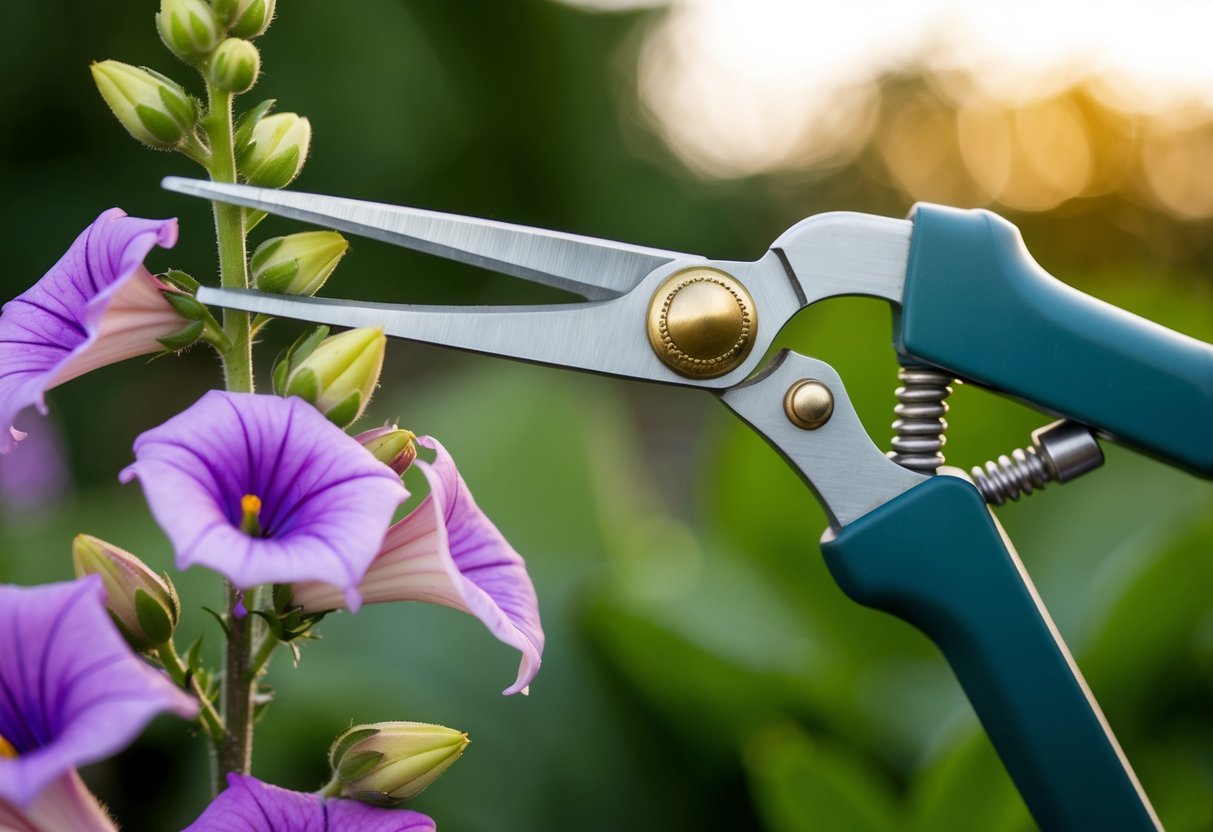
Deadheading lobelia is a simple way to keep your garden lively. By removing the spent flowers, you can help your plants focus on producing new growth and encourage more blooms. This process is really easy and gives you a chance to enjoy more color throughout the season.
Regularly deadheading lobelia can extend its blooming period. Without those old flowers in the way, the plant gets a signal to produce more blossoms. This keeps your garden looking fresh and vibrant for a longer time.
Besides more blooms, deadheading supports the overall health of your lobelia. It helps the plant conserve energy and reduces the chance of diseases. A healthier plant is more likely to survive and thrive in different conditions, providing a beautiful display in your garden.
Here are the key benefits of deadheading lobelia:
- Encourages more blooms
- Extends the blooming period
- Supports overall health
- Promotes new growth
Taking a little time to deadhead your lobelia can really pay off. By keeping them trimmed and tidy, you’ll enjoy the full beauty of your garden all season long.
How to Deadhead Lobelia

Deadheading lobelia keeps your garden bright and full of blooms. This simple technique involves removing old or faded flowers to encourage more growth. You’ll just need a few tools and a bit of time to make your lobelia look its best.
Start by checking your plants regularly. Look for flowers that have started to wilt or lose color. These are the ones you’ll want to remove first. When you notice them, it’s time to take action.
Use a pair of pruning shears or your fingers to pinch off these spent blooms. Gently hold the stem with one hand and make a clean cut just above a new bud or leaf. This allows the plant to focus its energy on growing new, beautiful flowers.
Regular maintenance can help keep your lobelia neat. Sometimes, you might need to give the entire plant a light trim. To trim lobelia, cut back stems by about one-third to promote healthy growth. This is especially helpful if your plant starts looking a bit scraggly or leggy.
Timing is key when it comes to deadheading. The best time to deadhead lobelia is throughout the growing season, especially after each bloom cycle. Regularly doing this helps the plant produce fresh flowers continuously.
In the end, your lobelia will reward you with vibrant colors and a longer blooming period. Enjoy the beauty that comes with taking good care of these lovely plants.
Caring for Lobelia Beyond Deadheading
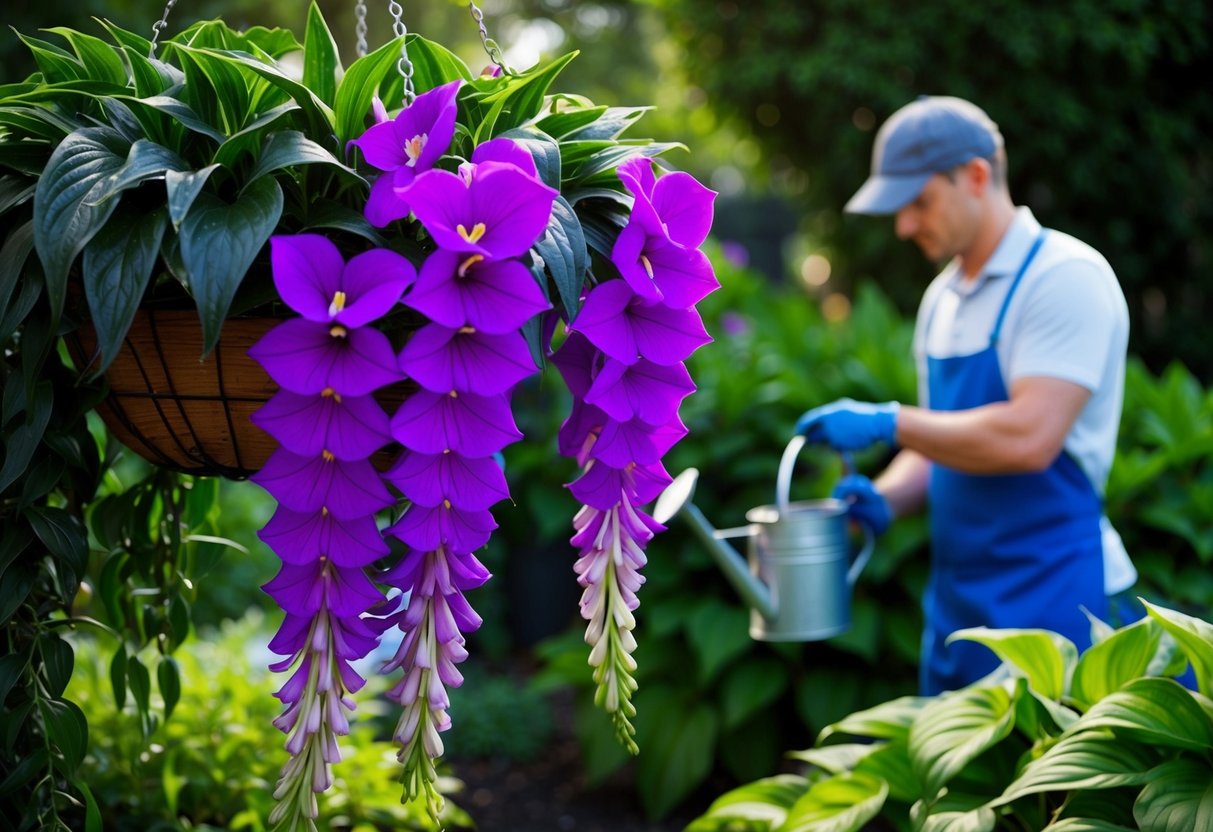
Lobelia requires more than just deadheading to thrive. Proper care includes watering, fertilizing, and watching out for pests and diseases. Ensuring the plant gets the right amount of sunlight and temperature also plays a huge role in its health.
Watering and Fertilizing
Lobelia prefers well-drained soil. It’s important to keep the soil moist but not waterlogged. During hot, dry weather, you may need to water more often. A thin layer of mulch can help retain soil moisture and keep roots cool.
When it comes to fertilizing, a balanced fertilizer applied every few weeks during the growing season can encourage lush growth. Too much fertilizer, especially high in nitrogen, might lead to excessive leaf growth at the expense of flowers. Opt for one that promotes blooming.
Addressing Pests and Diseases
Lobelia can attract some pests and suffer from diseases. Common pests include aphids and spider mites. Insecticidal soap is effective against many of these little invaders and is safe for most beneficial insects.
Fungal diseases like powdery mildew can occur, especially in humid conditions. Ensuring good air circulation and avoiding overhead watering can help prevent these issues. If you notice fungal problems, removing affected parts of the plant and improving air circulation are good first steps.
The Importance of Sunlight and Temperature
Getting the right balance of sunlight is crucial. Lobelia thrives in full sun to partial shade. In hotter climates, some afternoon shade can prevent the plant from getting scorched.
The best temperatures for lobelia are moderate. Extreme heat can cause stress, making it important to maintain some level of humidity around the plant. In cooler temperatures, ensure the plant does not sit in overly wet soil. This balance keeps lobelia healthy and flowering beautifully throughout the season.
Creating the Optimal Environment for Lobelia
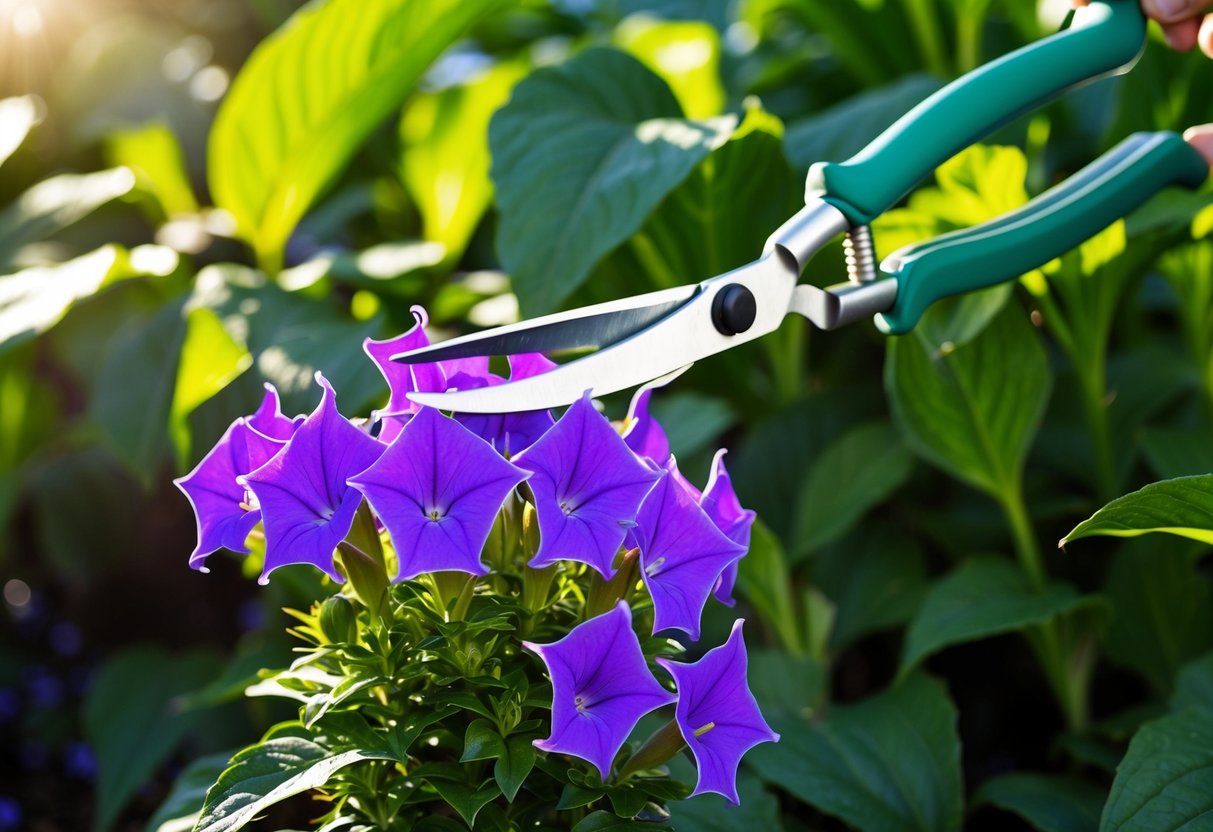
To grow lobelia, you should start by choosing the right spot. Lobelia thrives in full sun or partial shade. Consider planting them in containers, hanging baskets, or window boxes. These plants bring vibrant color to any space with their blue, pink, white, and purple flower colors.
When it comes to soil, opt for well-draining options. Proper drainage is key to prevent soggy roots. Lobelia needs to stay moist, but too much water can harm the plant. Good soil helps keep your lobelia healthy and producing its beautiful blooms.
Lobelia is typically a great choice for the landscape in USDA zones 10-11. If you’re starting from seed, make sure to plant them early, as they can take a while to germinate. Planting lobelia in the right climate ensures they continue to bloom vibrantly.
If you decide to plant in containers or hanging baskets, remember to water more often. These setups can dry out quickly, especially in hot weather. Keep an eye on the soil moisture to maintain those stunning blooms.
A variety of flower colors and shapes allows for endless design possibilities. Incorporate lobelia into your garden or home for a splash of vibrant color. This friendly and charming plant will brighten up any area with its stunning flowers.
Supporting the Local Ecosystem with Lobelia
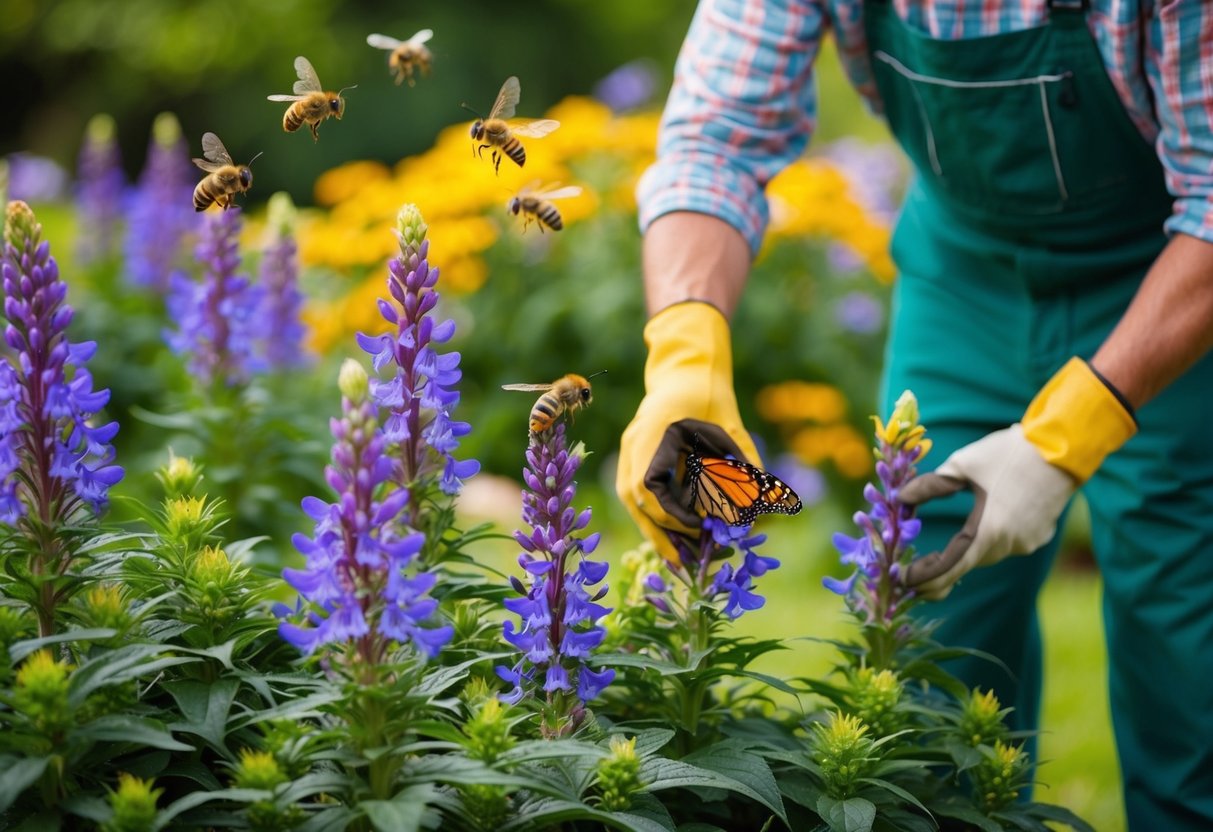
Lobelia is an excellent choice if you’re looking to boost your garden’s eco-friendliness. Trailing lobelia varieties can attract many pollinators.
Bees love the nectar-rich blooms, while hummingbirds are drawn to their bright colors. This helps spread pollen and keeps your garden lively.
Butterflies are also fans. They contribute to pollination, ensuring your plants thrive. By cultivating lobelia, you offer these pollinators a safe haven.
To keep your lobelia looking its best, consider deadheading. Removing faded growth encourages more blooms and can maintain a compact form.
When lobelia looks leggy, a little trim can help.
Care Tips:
- Deadhead lobelia to encourage new blooms.
- Keep an eye on water levels; lobelia prefers moist soil.
- Trim regularly to prevent leggy lobelia growth.
Regular trimming keeps your garden tidy and benefits pollinators. Your effort supports the ecosystem and adds vibrant beauty to your space.







